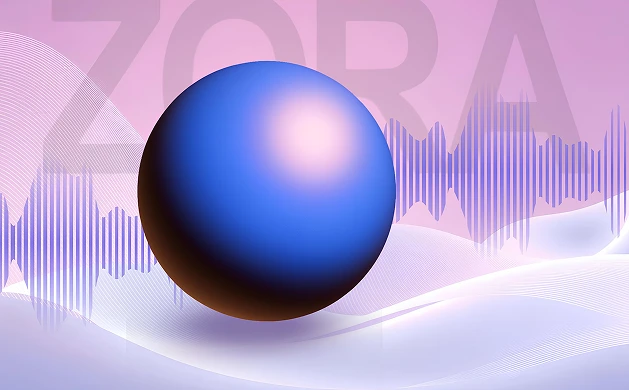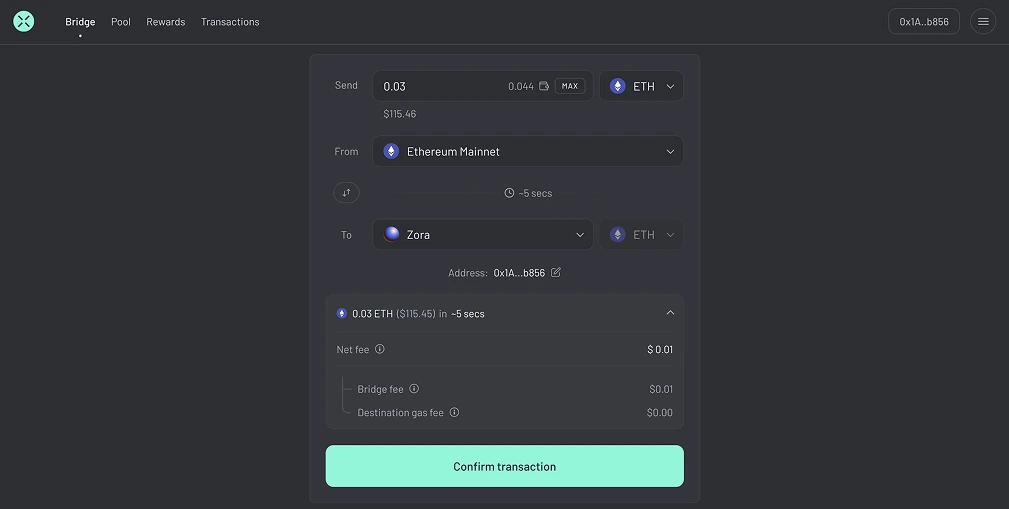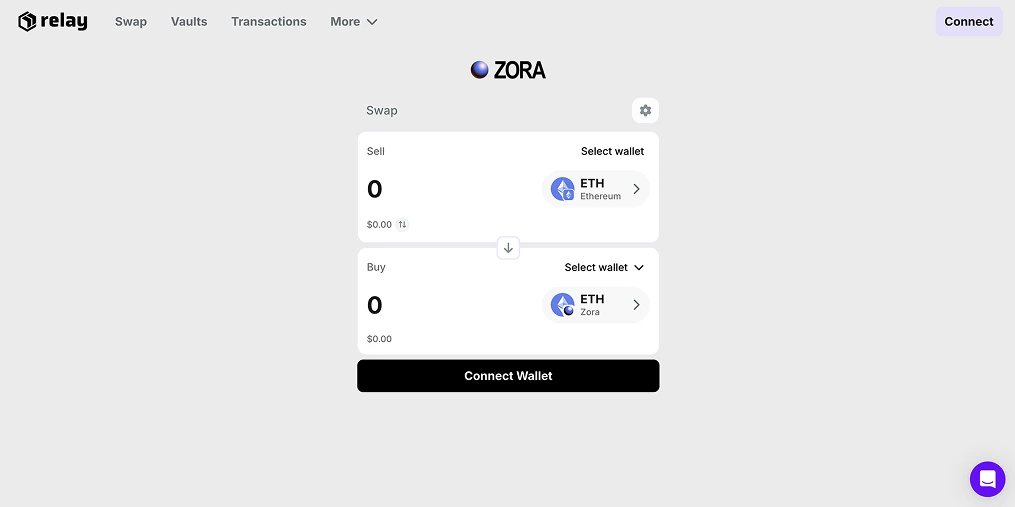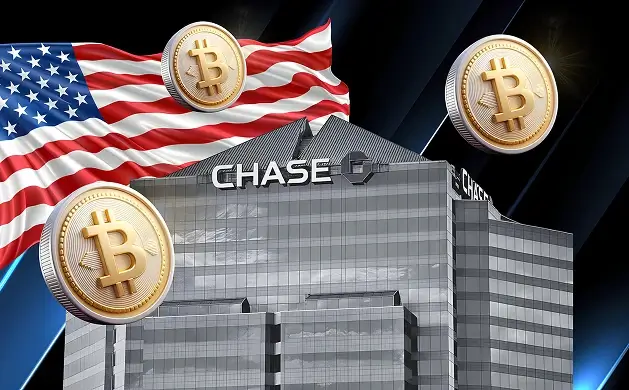How to Bridge to Zora (Mainnet & Zora Sepolia)

Summary: The quickest and most cost-effective method to bridge tokens to Zora is via Across Protocol, providing secure, rapid transfers at minimal fees (around 0.01% per transaction).
Connect your wallet, set Zora as the destination, and choose USDC or ETH to optimize costs and liquidity. Approve the transaction, cover gas fees, and tokens arrive in your Zora wallet within minutes.
Across is the leading bridge to Zora, processing over $22 billion in transactions with fees under 0.01%, sub-minute transfer speeds, and robust security via UMA's optimistic oracle.
Supported Chains
Zora, Ethereum, Base, Arbitrum and more
Supported Tokens
ETH, USDC, USDT, DAI, WBTC and more
Bridge Fees
https://0.01% Fee + Gas Fees (Variable)
Can I Bridge to Zora?
Yes, bridging tokens to Zora is straightforward using Ethereum-compatible cross-chain bridges. These bridges allow users to transfer popular assets such as ETH, USDC, and USDT directly onto the Zora layer 2 network without involving centralized exchanges.
Once bridged, tokens can be used on Zora's ecosystem to mint NFTs, launch social tokens and interact with various decentralized applications built for content creators and collectors.
How to Bridge to Zora
Bridging crypto to Zora is quick and secure using Across Protocol, a leading cross-chain bridge connecting Ethereum to Zora's Layer 2 network. Across leverages intents-based technology to provide extremely fast transfers at minimal fees, with over $22 billion securely bridged to date.
Here’s how to bridge assets to Zora with Across Protocol:
- Connect Your Wallet: Access Across Protocol’s website and link your Web3 wallet, such as MetaMask.
- Select Networks and Asset: Set Ethereum as the source network, choose Zora as the destination, and pick your token (ETH or USDC recommended).
- Enter Transfer Amount: Input the amount you wish to bridge and approve the transaction in your wallet.
- Confirm and Complete: Follow on-screen prompts and your tokens will arrive in your Zora wallet within minutes.

What Are the Fees for Bridging to Zora?
When bridging tokens to Zora with Across Protocol, you’ll incur two main types of fees:
- Bridge Fee: Across charges a minimal bridging fee of approximately 0.01% per transaction, substantially lower than alternatives such as Synapse, which typically charges around 0.1%.
- Gas Fees: These fees depend on the source network. Transfers originating from Ethereum mainnet gas typically cost between $5–$10 per transaction, while transfers from Layer 2 networks like Arbitrum cost under $1.
Overall, Across Protocol provides a cost-effective, reliable solution for bridging assets to Zora, allowing users to interact with NFTs and decentralized apps without high costs.
Best Alternative Bridges for Zora Users
While Across Protocol is a leading option for bridging to Zora, users can also consider several reliable alternatives:
- Superbridge: Offers secure bridging via Zora’s native contracts between Ethereum Sepolia and Zora Sepolia Testnets. It charges no extra fees beyond standard network gas costs.
- Relay Swap: Delivers fast, low-cost bridging to Zora through decentralized relayers, ideal for NFTs and token transfers. Relay’s fees typically stay under 0.05%, plus minimal gas costs.
- Rango Exchange: A multi-chain aggregator supporting over 70 chains, including Ethereum, Arbitrum, Cosmos, Solana, and Zora. It supports 1,000+ tokens such as ETH, USDC, and USDT, with swap fees around 0.1% per transaction.
Compare fees, speeds, and supported tokens carefully to select the optimal bridge for your needs.

How to Bridge to Zora Sepolia Testnet
You can bridge tokens onto Zora Sepolia Testnet using dedicated cross-chain testnet bridges, such as Superbridge. These bridges enable users to transfer test assets from Ethereum Sepolia directly onto Zora’s Layer 2 test environment.
To start, you'll first need Sepolia Testnet ETH, available from reliable faucets like Quicknode. Once funded, simply connect your wallet to Superbridge, select Ethereum Sepolia as your origin, and choose Zora Sepolia Testnet as your destination.
The Zora Testnet provides an environment for developers and users to test smart contracts, NFTs, token launches, and dapps, before deploying on the Zora mainnet.
.webp)
About Zora
Zora is a Layer 2 blockchain focused on content tokenization, creator monetization, and on-chain media. Built on Ethereum’s OP Stack, it enables scalable NFT minting and social token launches, significantly lowering gas fees and boosting transaction throughput.
Zora integrates creator rewards directly into its protocol, producing steady, activity-based revenue instead of conventional platform fees. Its analytics dashboard delivers detailed insights into financial metrics, token performance, and user retention, giving investors and developers clear visibility into network adoption.
.webp)
Final Thoughts
Bridging assets to Zora opens direct access to its Layer 2 ecosystem built specifically for creators and decentralized applications.
To minimize fees and streamline transactions, choose efficient bridges like Across Protocol or reliable alternatives such as Superbridge, Relay Swap, and Rango Exchange.
Start by testing functionality on Zora’s Sepolia Testnet before transitioning smoothly to mainnet activities involving NFTs, DeFi, and social tokens.
%2520(1).webp)
Written by
Tony Kreng
Lead Editor
Tony Kreng, who holds an MBA in Business & Finance, brings over a decade of experience as a financial analyst. At Datawallet, he serves as the lead content editor and fact-checker, dedicated to maintaining the accuracy and trustworthiness of our insights.

.webp)
%2520(1).webp)

.webp)
.webp)




